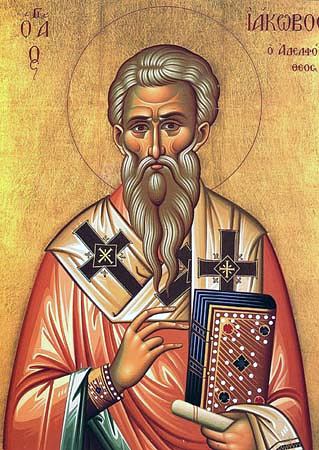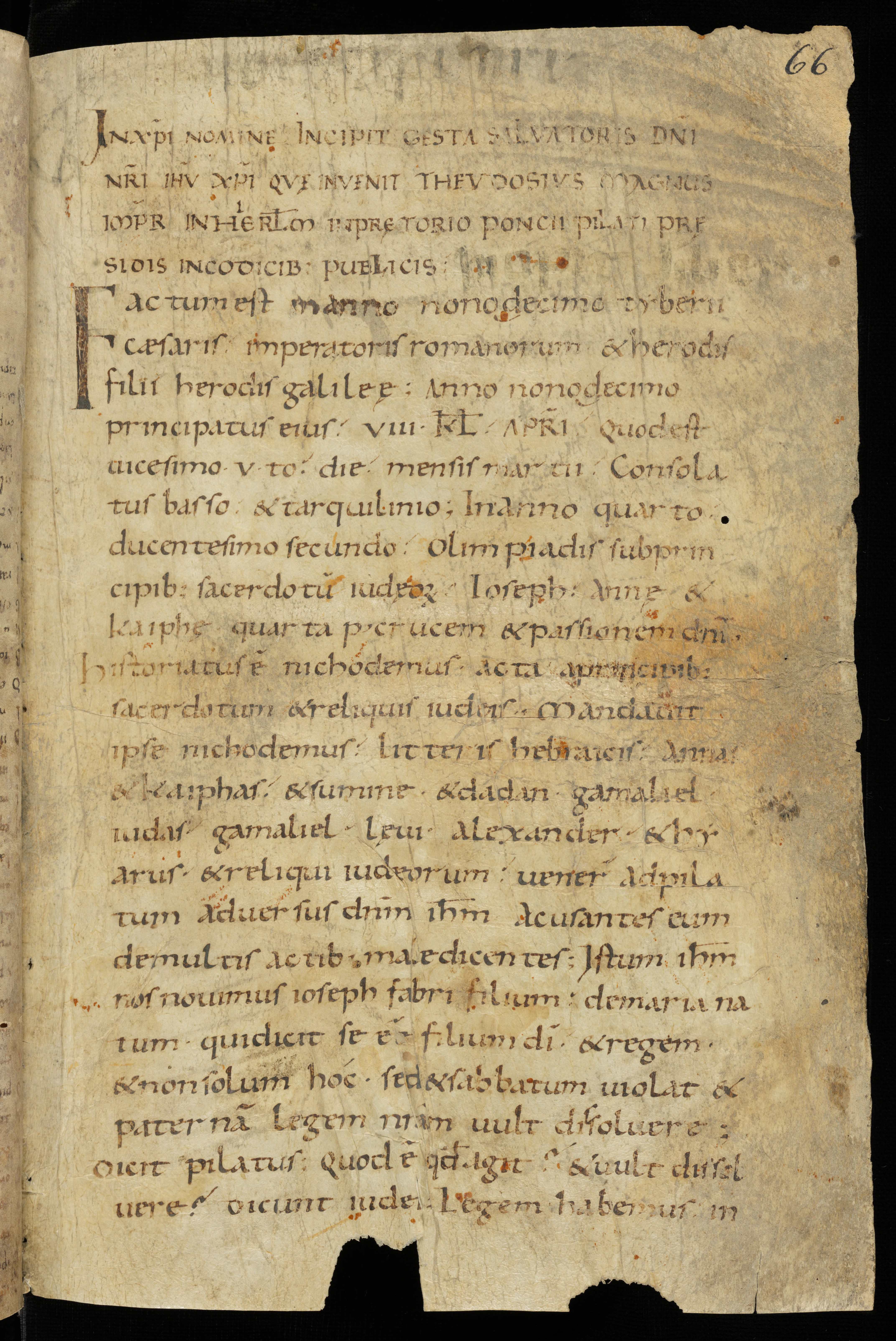|
Proselyte
The biblical term "proselyte" is an anglicization of , as used in the Septuagint for "stranger", i.e. a "newcomer to Israel"; a "sojourner in the land", and in the Novum Testamentum Graece for a first-century convert to Judaism. It is a translation of or ''ger toshav''. "Proselyte" also has the more general meaning in English of a new convert to any particular religion or doctrine. History of the proselyte in Israel The Law of Moses made specific regulations regarding the admission into Israel's community of such as were not born Israelites. The New Testament makes mention of proselytes in synagogues. The name ''proselyte'' occurs in the New Testament only in Matthew and Acts. The name by which they are commonly designated is that of "devout men", or men "fearing God", or "worshipping God", "fearers of Heaven" or " God-fearers". On the historical meaning of the Greek word, in chapter 2 of the apocryphal Gospel of Nicodemus, roughly dated between 150 to 400, Annas and Caiaph ... [...More Info...] [...Related Items...] OR: [Wikipedia] [Google] [Baidu] |
God-fearer
God-fearers (, ''phoboumenoi ton Theon'') or God-worshippers (, ''Theosebeis'') were a numerous class of Gentile sympathizers to Hellenistic Judaism that existed in the Greco-Roman world, which observed certain Jewish religious rites and traditions without becoming full converts to Judaism. The concept has precedents in the proselytes of the Hebrew Bible. Many of these Greco-Roman sympathizers to Hellenistic Judaism were worshippers of Caelus (the Roman name/equivalent to Yahweh). More generally, has come to mean someone who is honestly religious. Overview Origin, history, status and diffusion Since the mid-1980s, a growing number of scholars of Judaic studies and history of Judaism became interested in the subject of God-fearers and their relationship with Hellenistic Judaism and early Christianity. According to the popular opinion, Jews that lived in the Greco-Roman world during the Hellenistic and Roman period were not involved in active missionary efforts of mass con ... [...More Info...] [...Related Items...] OR: [Wikipedia] [Google] [Baidu] |
Ger Toshav
''Ger toshav'' (, ''ger'': "foreigner" or "alien" + ''toshav'': "resident", lit. "Alien (law), resident alien") is a Halakha, halakhic term used in Judaism to designate the legal status of a Gentile#Judaism, Gentile (non-Jew) living in the Land of Israel who does not want to convert to Judaism but agrees to observe the Seven Laws of Noah, a set of imperatives which, according to the Talmud, were given by God in Judaism, God as a binding set of Universal morality, universal moral laws for the "sons of Noah"—that is, all of Humans, humanity. A ''ger toshav'', especially one who decides to follow the Noahic covenant out of religious belief rather than ethical reasoning, is commonly deemed a "Righteous Gentile" (, ''Chassid Umot ha-Olam'': "Pious People of the World"), and is assured of a place in the World to Come#Jewish eschatology, World to Come (''Olam Ha-Ba''). Definition A ''ger toshav'' ("resident alien") is a Gentile#Judaism, Gentile (non-Jew) living in the Land of Is ... [...More Info...] [...Related Items...] OR: [Wikipedia] [Google] [Baidu] |
Conversion To Judaism
Conversion to Judaism ( or ) is the process by which non-Jews adopt the Jewish religion and become members of the Jewish ethnoreligious community. It thus resembles both conversion to other religions and naturalization. "Thus, by converting to Judaism, the religion, a gentile becomes not only a Judahist—one who practices Judaism—but a Jew. Such a one is then part of the Jewish community as much as of the community of Judaism" The procedure and requirements for conversion depend on the sponsoring denomination. Furthermore, a conversion done in accordance with one Jewish denomination is not a guarantee of recognition by another denomination. Normally, though not always, the conversions performed by more stringent denominations are recognized by less stringent ones, but not the other way around. A formal conversion is also sometimes undertaken by individuals who are raised Jewish or have Jewish ancestry but who may not be considered Jewish according to stringent interpret ... [...More Info...] [...Related Items...] OR: [Wikipedia] [Google] [Baidu] |
Gentile
''Gentile'' () is a word that today usually means someone who is not Jewish. Other groups that claim Israelite heritage, notably Mormons, have historically used the term ''gentile'' to describe outsiders. More rarely, the term is used as a synonym for ''heathen'', '' pagan''. As a term used to describe non-members of a religious/ethnic group, ''gentile'' is sometimes compared to other words used to describe the "outgroup" in other cultures See for example a discussion of the similarity to the Japanese term '' gaijin'' in (see List of terms for ethnic out-groups). In some translations of the Quran, ''gentile'' is used to translate an Arabic word that refers to non-Jews and/or people not versed in or not able to read scripture. The English word ''gentile'' derives from the Latin word , meaning "of or belonging to the same people or nation" (). Archaic and specialist uses of the word ''gentile'' in English (particularly in linguistics) still carry this meaning of "relating to a pe ... [...More Info...] [...Related Items...] OR: [Wikipedia] [Google] [Baidu] |
Septuagint
The Septuagint ( ), sometimes referred to as the Greek Old Testament or The Translation of the Seventy (), and abbreviated as LXX, is the earliest extant Greek translation of the Hebrew Bible from the original Biblical Hebrew. The full Greek title derives from the story recorded in the Letter of Aristeas to Philocrates that "the laws of the Jews" were translated into Koine Greek, the Greek language at the request of Ptolemy II Philadelphus (285–247 BC) by seventy-two Hebrew sofer, translators—six from each of the Twelve Tribes of Israel.Megillah (Talmud), Tractate Megillah 9](9a)/ref>Soferim (Talmud), Tractate Soferim 1](1:7-8)/ref> Textual criticism, Biblical scholars agree that the Torah, first five books of the Hebrew Bible were translated from Biblical Hebrew into Koine Greek by Jews living in the Ptolemaic Kingdom, centred on the History of the Jews in Alexandria, large community in Alexandria, probably in the early or middle part of the 3rd century BC. The remainin ... [...More Info...] [...Related Items...] OR: [Wikipedia] [Google] [Baidu] |
Circumcision Controversy In Early Christianity
The circumcision controversy in early Christianity played an important role in Christian theology. The circumcision of Jesus is celebrated as a feast day in the liturgical calendar of many Christian denominations, while the teachings of the Apostle Paul asserted that physical circumcision was unnecessary for the salvation of Gentiles and their membership in the New Covenant. The first Council of Jerusalem (c. 50) declared that circumcision was not necessary for new Gentile converts, ; , , , , ; ; ; , , , ; ; ; . (as recorded in ); Pauline Christianity was instrumental in the split of early Christianity and Judaism and eventually became Christians’ predominant position.Jewish Encyclopedia: Baptism "According to rabbinical teachings, which dominated even during the existence of the Temple ... [...More Info...] [...Related Items...] OR: [Wikipedia] [Google] [Baidu] |
Noahide Laws
In Judaism, the Seven Laws of Noah (, ''Sheva Mitzvot B'nei Noach''), otherwise referred to as the Noahide Laws or the Noachian Laws (from the Hebrew pronunciation of "Noah"), are a set of universal moral laws which, according to the Talmud, were given by God as a covenant with Noah and with the "sons of Noah"—that is, all of humanity. The Seven Laws of Noah include prohibitions against worshipping idols, cursing God, murder, adultery and sexual immorality, theft, eating flesh torn from a living animal, as well as the obligation to establish courts of justice. According to Jewish law, non-Jews (gentiles) are not obligated to convert to Judaism, but they are required to observe the Seven Laws of Noah to be assured of a place in the World to Come (''Olam Ha-Ba''), the final reward of the righteous. The non-Jews that choose to follow the Seven Laws of Noah are regarded as "Righteous Gentiles" (, ''Chassiddei Umot ha-Olam'': "Pious People of the World"). List The ... [...More Info...] [...Related Items...] OR: [Wikipedia] [Google] [Baidu] |
Circumcision
Circumcision is a procedure that removes the foreskin from the human penis. In the most common form of the operation, the foreskin is extended with forceps, then a circumcision device may be placed, after which the foreskin is excised. Topical or locally injected anesthesia is generally used to reduce pain and physiologic stress. Circumcision is generally electively performed, most commonly done as a form of preventive healthcare, as a religious obligation, or as a cultural practice. It is also an option for cases of phimosis, other pathologies that do not resolve with other treatments, and chronic urinary tract infections (UTIs). The procedure is contraindicated in cases of certain genital structure abnormalities or poor general health. The procedure is associated with reduced rates of sexually transmitted infections and urinary tract infections. This includes reducing the incidence of cancer-causing forms of human papillomavirus (HPV) and reducing HIV transmi ... [...More Info...] [...Related Items...] OR: [Wikipedia] [Google] [Baidu] |
Paganism
Paganism (, later 'civilian') is a term first used in the fourth century by early Christians for people in the Roman Empire who practiced polytheism, or ethnic religions other than Christianity, Judaism, and Samaritanism. In the time of the Roman Empire, individuals fell into the pagan class either because they were increasingly rural and provincial relative to the Christian population, or because they were not '' milites Christi'' (soldiers of Christ).J. J. O'Donnell (1977)''Paganus'': Evolution and Use, ''Classical Folia'', 31: 163–69. Alternative terms used in Christian texts were '' hellene'', '' gentile'', and '' heathen''. Ritual sacrifice was an integral part of ancient Greco-Roman religion and was regarded as an indication of whether a person was pagan or Christian. Paganism has broadly connoted the "religion of the peasantry". During and after the Middle Ages, the term ''paganism'' was applied to any non-Christian religion, and the term presumed a belief in fal ... [...More Info...] [...Related Items...] OR: [Wikipedia] [Google] [Baidu] |
Rabbinic Literature
Rabbinic literature, in its broadest sense, is the entire corpus of works authored by rabbis throughout Jewish history. The term typically refers to literature from the Talmudic era (70–640 CE), as opposed to medieval and modern rabbinic writings. It aligns with the Hebrew term ''Sifrut Chazal'' (), which translates to “literature f oursages” and generally pertains only to the sages (''Chazal'') from the Talmudic period. This more specific sense of "Rabbinic literature"—referring to the Talmud, Midrashim (), and related writings, but hardly ever to later texts—is how the term is generally intended when used in contemporary academic writing. The terms ''mefareshim'' and ''parshanim'' (commentaries and commentators) almost always refer to later, post-Talmudic writers of rabbinic glosses on Biblical and Talmudic texts. Mishnaic literature The Midr'she halakha, Mishnah, and Tosefta (compiled from materials pre-dating the year 200 CE) are the earliest extan ... [...More Info...] [...Related Items...] OR: [Wikipedia] [Google] [Baidu] |
Gospel Of Nicodemus
The Gospel of Nicodemus, also known as the Acts of Pilate (; ), is an apocryphal gospel purporting to be derived from an original work written by Nicodemus, who appears in the Gospel of John as an acquaintance of Jesus. The title "Gospel of Nicodemus" is medieval in origin. The dates of its accreted sections are uncertain, but the work in its existing form is thought to date to around the 4th or 5th century AD. The author was probably a Hellenistic Jew who converted to Christianity, or, as Constantin von Tischendorf and Maury conclude, a Christian imbued with Judaic and Gnostic beliefs. History and authenticity The oldest sections of the book appear first in Greek. The text contains multiple parts, which are uneven in style and would seem to be by different authors. A prologue found in some versions asserts that the text is a translation into Greek of eyewitness accounts found in the praetorium at Jerusalem. The question of the original language is debated. Beyond Greek, the v ... [...More Info...] [...Related Items...] OR: [Wikipedia] [Google] [Baidu] |




